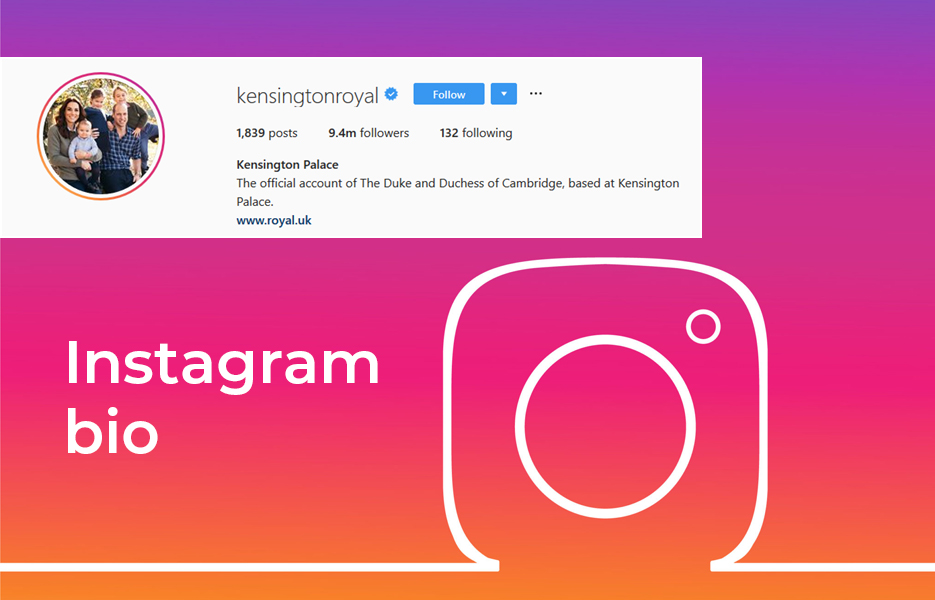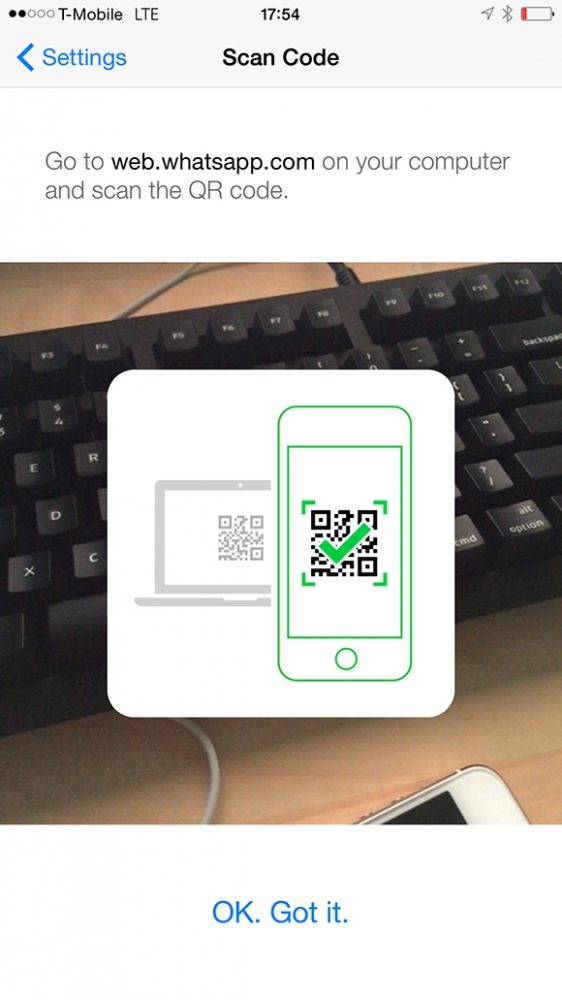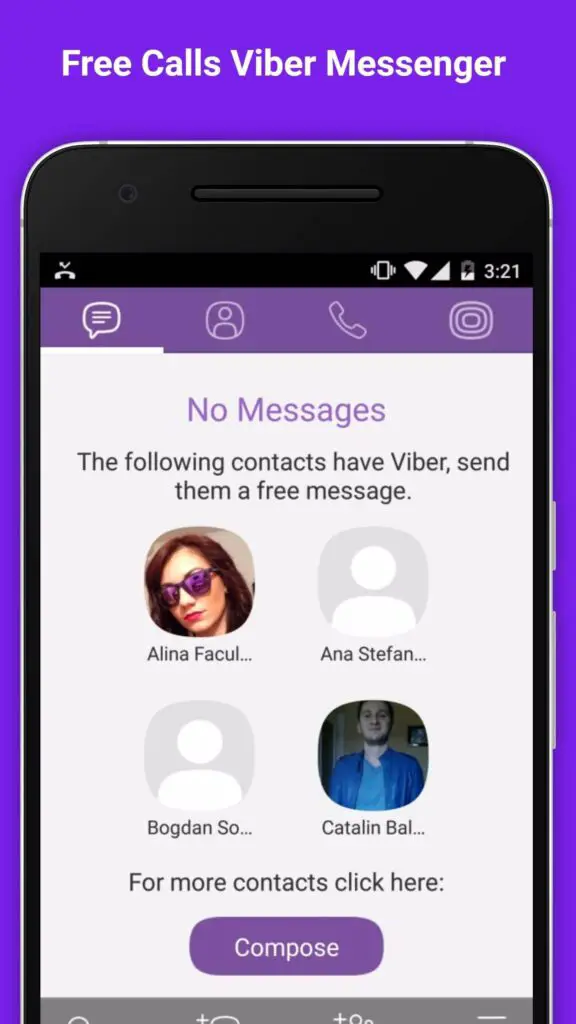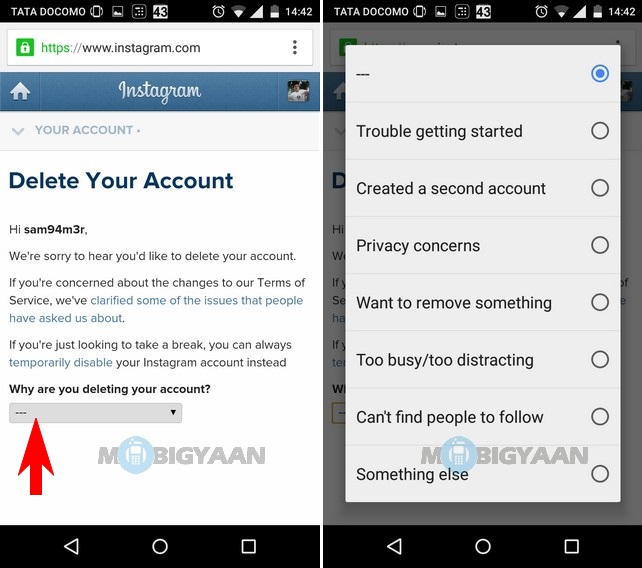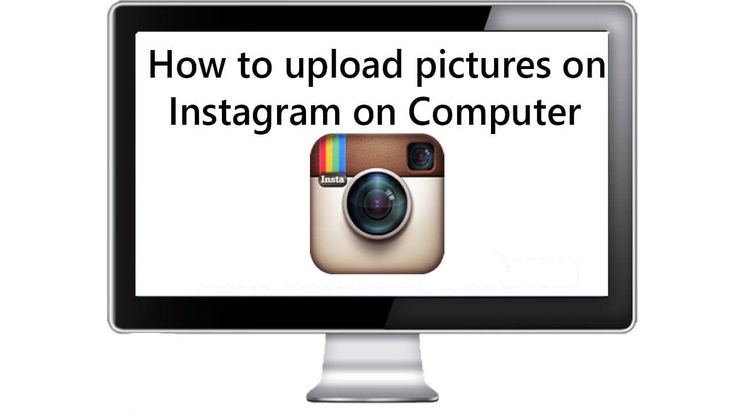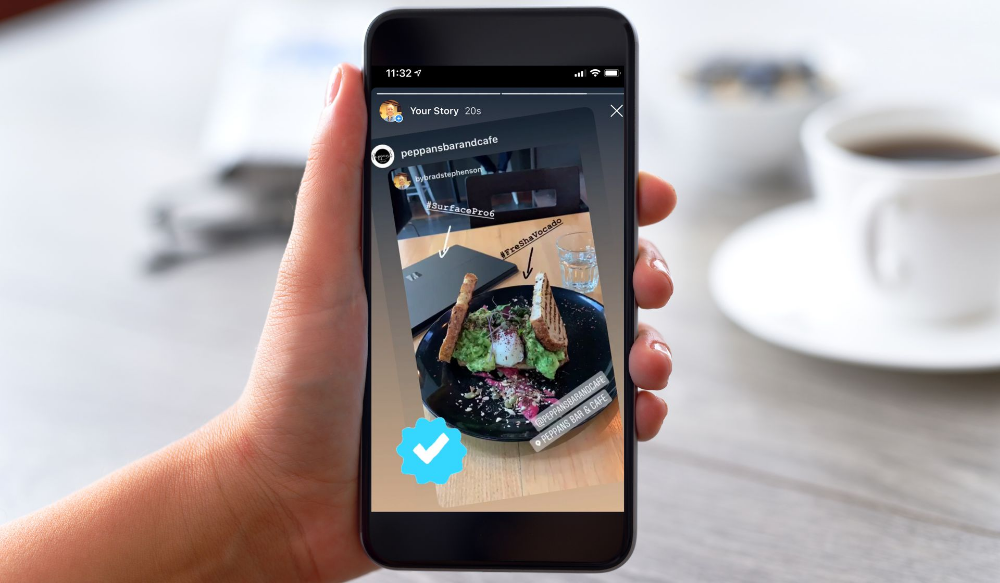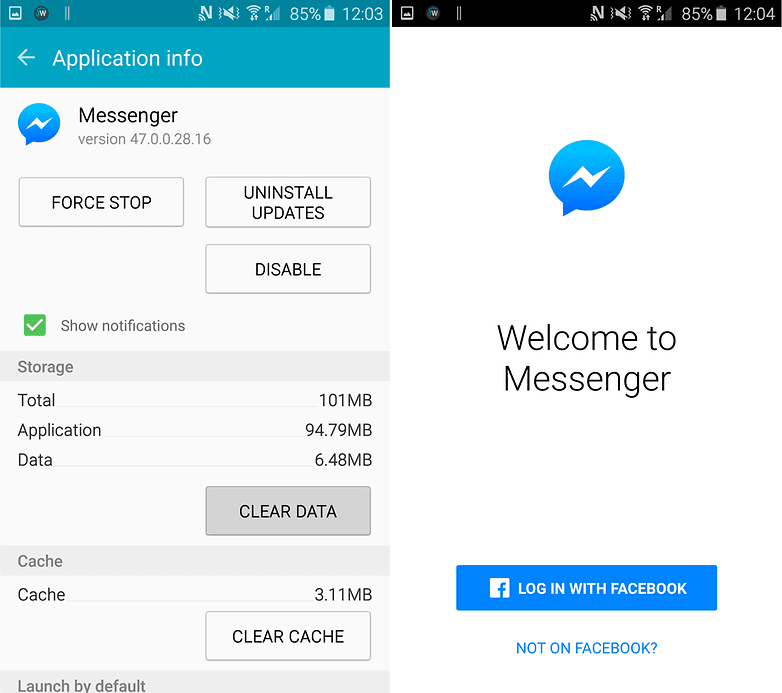How to use instagram algorithm
How to Get Your Content Seen
Congratulations! You’ve crafted the perfect Instagram post! But hold up, your work isn’t done quite yet. Because if you want your content to actually get in front of a wide audience, you’re going to need to appease the all-mighty (and ever-changing) Instagram algorithm.
Understanding the 2022 Instagram algorithm and what it deems worthwhile or important is critical to a successful social media marketing strategy. In this guide, we cover the ins and outs of the algorithm’s ranking signals, important recent changes to the Instagram algorithm, and everything else you need to know to boost your content’s visibility on the platform.
Read on to make sure your lovingly handcrafted social content gets the attention it deserves!
What is the Instagram algorithm?
How does the Instagram algorithm work?
2022 changes to the Instagram algorithm
7 tips for working with the Instagram algorithm
Instagram algorithm FAQ
Bonus: Download a free checklist that reveals the exact steps a fitness influencer used to grow from 0 to 600,000+ followers on Instagram with no budget and no expensive gear.
What is the Instagram algorithm?
The Instagram algorithm is a set of rules that rank content on the platform. It decides what content shows up, and in what order, on all Instagram users’ feeds, the Explore Page, the Reels feed, hashtag pages, etc.
The Instagram algorithm analyzes every piece of content posted to the platform. It takes metadata (including captions and alt text applied to images), hashtags, and engagement metrics into account. Based on this information, it distributes content in a way designed to ensure that users have easy access to what they are most interested in seeing.
In simple terms, the Instagram algorithm cross-references information about content (posts, Stories, Reels) with information about users (interests and behavior on the platform) to serve the right content to the right people.
The main purpose of the Instagram algorithm is to make each user’s experience with the platform as pleasant as possible. “We want to make the most of your time, and we believe that using technology [the Instagram algorithm] to personalize your experience is the best way to do that,” wrote Instagram CEO Adam Mosseri in 2021 in a blog post entitled Shedding More Light on How Instagram Works.
“We want to make the most of your time, and we believe that using technology [the Instagram algorithm] to personalize your experience is the best way to do that,” wrote Instagram CEO Adam Mosseri in 2021 in a blog post entitled Shedding More Light on How Instagram Works.
Why does this matter to marketers? Knowing how the Instagram algorithm works and optimizing your content accordingly can lead to Instagram displaying your posts to more users.
How does the Instagram algorithm work?Each time a user opens the app, the Instagram algorithms instantly comb through all available content and decide what content to serve them (and in what order).
The 3 most important ranking factors of the 2022 Instagram algorithm are:
- Relationship between the author of the content and the viewer. Do you follow each other? Do you message each other, or leave comments? If you have repeatedly interacted with a specific user in the past, you are more likely to see the new content they post.
 (This is very important for businesses: Active community management (including responding to DMs and comments) can improve a brand’s visibility on Instagram.)
(This is very important for businesses: Active community management (including responding to DMs and comments) can improve a brand’s visibility on Instagram.) - Interest. Does a user typically interact with this type of content? When the Instagram algorithm recognizes that a user enjoys a specific content type or format, they serve them more of the same.
- Relevancy. Instagram decides how “relevant” every piece of content is. This includes an analysis of where it fits with trending topics as well as the timeliness factor (recent posts are considered more relevant than old ones).
Secondary Instagram algorithm ranking factors include:
- Frequency of using the platform. If a user doesn’t open Instagram very often, they will only see the very most relevant content when they do decide to browse the app. This means that businesses might be crowded out of such a user’s feed by family and friends.
- How many users a person follows.
 The more accounts a user follows, the more accounts compete for space in their feed.
The more accounts a user follows, the more accounts compete for space in their feed. - Session time. If a user spends very little time in the app, they are likely to only see posts from friends and family they interact with most often on the platform, making it more difficult for businesses to surface in their feed.
Beyond these core signals, here’s how the Instagram algorithm distributes specific content formats.
The 2022 Instagram algorithm for the feed and StoriesFor your feed and Stories, the Instagram algorithm sorts through the content of the accounts you follow and predicts how likely you are to interact with a post based on the following criteria:
- Information about the post. How many likes did a post get? When was it posted? Has it been tagged with a location? If it’s a video, how long is it? These signals help the Instagram algorithm determine the relevance and popularity of a post.
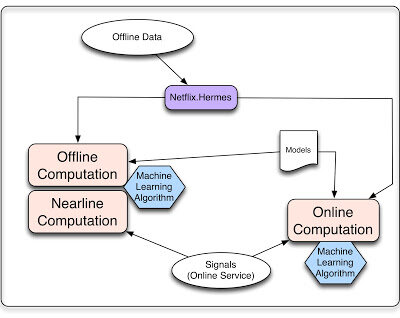
- Information about the person who posted, and your history of interaction with them. Instagram tracks how many times you’ve interacted with any given person (with comments, likes, profile views, and so on) to try to get a sense of how interesting a person might be to you.
- Your activity across the platform. The quantity and content of posts you’ve interacted with gives Instagram a clue as to what kind of other posts you might be interested in seeing.
For the Explore tab, the algorithm looks at previous posts that you’ve liked or interacted with, and pulls in a collection of photos and videos from related accounts that you don’t follow (yet!).
These photos and videos are then ranked by what the algorithm thinks you’ll be most interested in, based on how likely you are to like, save or share a post.
- Information about the post.
 When curating content to share via the Explore tab, Instagram looks at the overall popularity of a post, using signals like how many people are liking, commenting, sharing, and saving, and how quickly these activities happen.
When curating content to share via the Explore tab, Instagram looks at the overall popularity of a post, using signals like how many people are liking, commenting, sharing, and saving, and how quickly these activities happen. - Your history of interacting with the person who posted. Most of the content on Explore will be from new-to-you accounts, but accounts you have interacted with get a bit of a boost here.
- Your activity. What posts have you liked, commented on, or saved in the past? How have you behaved on the Explore page previously? Your activity history impacts what Instagram assumes you might be interested in seeing more of.
- Information about the person who posted. If an account has lots of interaction with users in the past few weeks, it’s a signal to Instagram that there’s some compelling content going on that others might like, too.
With Reels, the algorithm pulls from both accounts you follow and accounts you don’t follow, trying to entertain you with content it thinks you’ll watch all the way through.
It evaluates this by looking at the following:
- Your activity. Signals like which Reels you’ve liked, which you’ve commented on, and which you’ve engaged with all help Instagram understand what kind of content could be the most relevant to your interests.
- Your history of interacting with the person who posted. With Reels (much like Explore), you’re likely to be served up videos from creators you haven’t heard of… but if you have interacted with them in some way previously, Instagram takes that into consideration too. That’s probably why you see lots of content from creators you know of, but haven’t pulled the trigger on following yet.
- Information about the Reel. The Instagram algorithm tries to guess what the video is about based on the audio track and analysis of the pixels and frames, and takes into account the video’s popularity, too.
- Information about the person who posted.
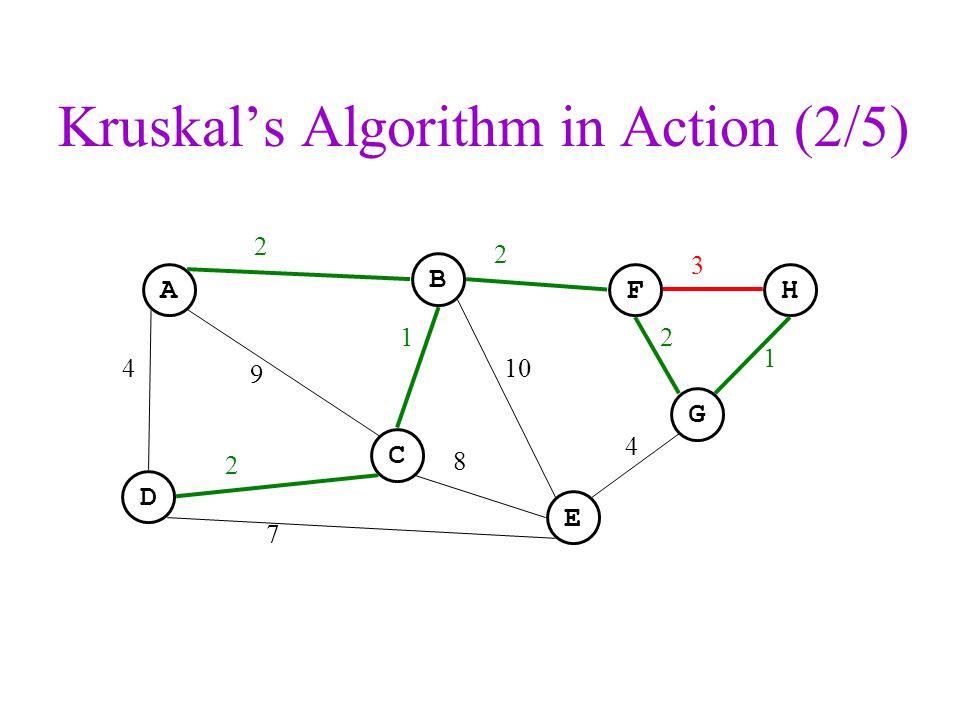 Is the original poster someone with an engaged audience, or whose content receives consistent likes and shares? Instagram takes this into account too.
Is the original poster someone with an engaged audience, or whose content receives consistent likes and shares? Instagram takes this into account too.
If you’re more of a visual learner, check out our video explaining the Instagram algorithm for beginners.
Now that you’re armed with all this information about what Instagram values from its creators and users, it’s time to use it to your advantage.
2022 changes to the Instagram algorithm
In 2022, Instagram re-introduced the ability to see your feed chronologically, as well as the ability to view a curated list of recent posts from your favorite accounts. Find more details on the latest Instagram feed viewing options here.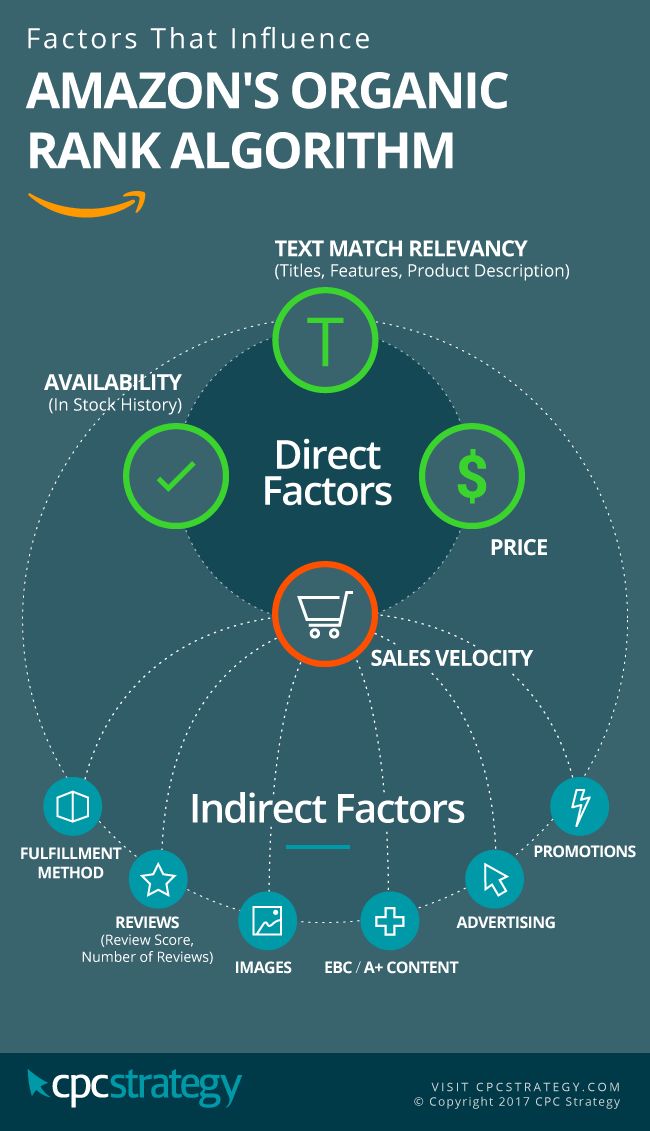
While these are important updates, it’s safe to say that the Instagram algorithm as described above still impacts how content is displayed to most users and in most placements on the platform.
Testing Feed Changes 👀
We’re starting to test the ability to switch between three different views on your home screen (two of which would give you the option to see posts in chronological order):
– Home
– Favorites
– FollowingWe hope to launch these soon. More to come. ✌🏼 pic.twitter.com/9zvB85aPSp
— Adam Mosseri (@mosseri) January 5, 2022
Video content and AI-driven recommendations have also become visibly more prominent on the platform since the beginning of 2022. So prominent, in fact, that they triggered a Make Instagram Instagram Again movement in July, supported by casual users and A-list celebrities (including a few Kardashians) alike.
7 tips for working with the Instagram algorithmAt a glance, this list of variables may seem extensive or complicated… but ultimately, the algorithm rewards quality, engaging content.
So really, the best way to get a little Insta-boost is to just do the same things you would do to delight, entertain, or inform your audience.
Here’s how to grow your reach and optimize the power of the latest Instagram algorithm(s).
Respect the community guidelinesWhether you’re posting on the Feed, in Reels, or to Stories, Instagram’s algorithms limit the visibility of content that goes against the app’s Community Guidelines. If you’re sharing misinformation, posts that are political in nature, content that’s potentially upsetting or sensitive, or even just low-resolution media, you may find your content less widely distributed.
(Hot tip: if you think you’ve been shadowbanned, this is probably why!)
Get creative with ReelsEmbrace the opportunity for visibility by adding Reels to your content calendar. Reels are one of the newest features on Instagram, and the platform still seems to be promoting the format.
Reels are one of the newest features on Instagram, and the platform still seems to be promoting the format.
(Check out our Reels engagement experiment here!)
View this post on Instagram
A post shared by Hootsuite 🦉 (@hootsuite)
According to Instagram’s @creators account, Reels currently has live humans sifting through them to feature the best ones. Official tips for posting Instagram Reels that will get noticed include:
- Do not recycle watermarked TikToks
- Shoot in vertical
- Use the bells and whistles: filters, camera effects, music, etc.
Keep videos short and sweet, and above all, fun. The algorithm ranks Reels for their entertainment value.
Schedule your posts at the right time for maximum reachAudience interaction is an important signal across the board on Instagram, so posting your content at the right day and time is going to make a huge difference to your organic reach.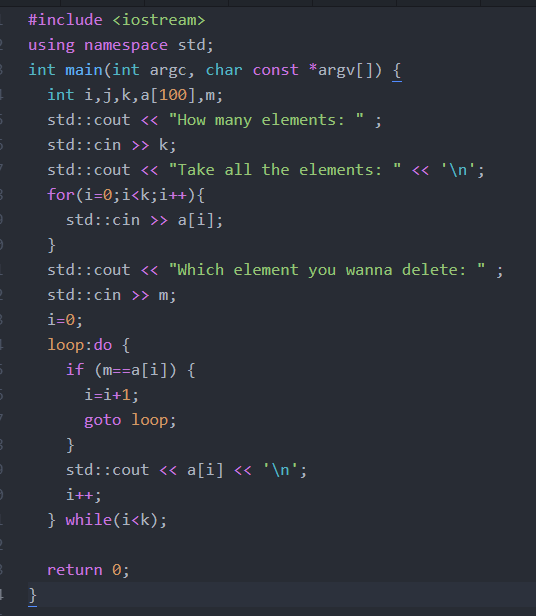
Luckily, Hootsuite’s dashboard helps crunch the numbers and offers suggested best times to post, based on your audience’s unique behavior.
Start your free trial. You can cancel anytime.
Here’s our guide to how to schedule Instagram posts, and another on how to schedule Instagram Stories.
Encourage engagement
Engagement is HUGE for the algorithm.
Not getting the engagement you want though? It’s often as simple as slapping on a sticker. With Instagram Stories, question stickers, emoji sliders, and polls are direct ways to ask your fans and followers to weigh in.
Similarly, on posts, directly asking questions or encouraging commentary with the caption (or within the image or video itself) is a surefire way to get the conversation going.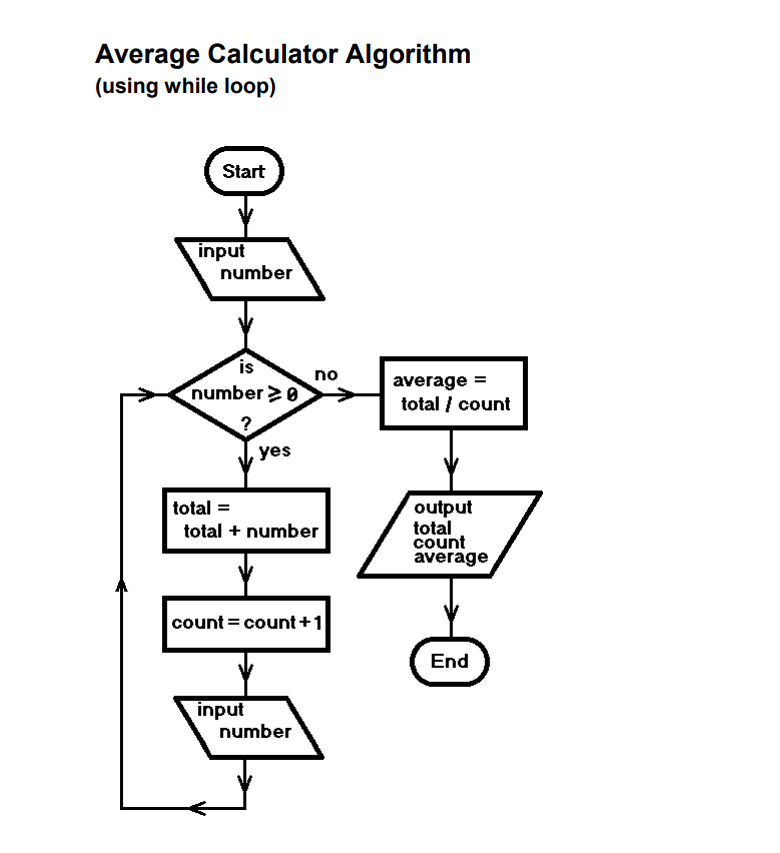
View this post on Instagram
A post shared by Instagram for Business (@instagramforbusiness)
After all, comments are the best way to signal engagement to the algorithm (though we’re not going to turn our nose up at a like, share, or save), so prompt your audience to speak up whenever you can.
For reference, the general benchmark for “good” engagement on Instagram is somewhere between 1-5%. But the average engagement rate on Instagram for business accounts was 0.83% through 2021.
If you’re looking to improve your own engagement rate, here are a few action items for your list:
- Define your audience so you know what they want from you (a.k.a. research your target market)
- Respond to comments and DMs (if you have a lot, we have a tool for that)
- Create an ongoing Story where you can share posts you’ve been tagged in (yes, we’re talking about UGC)
Here are some more tips for increasing your Instagram engagement.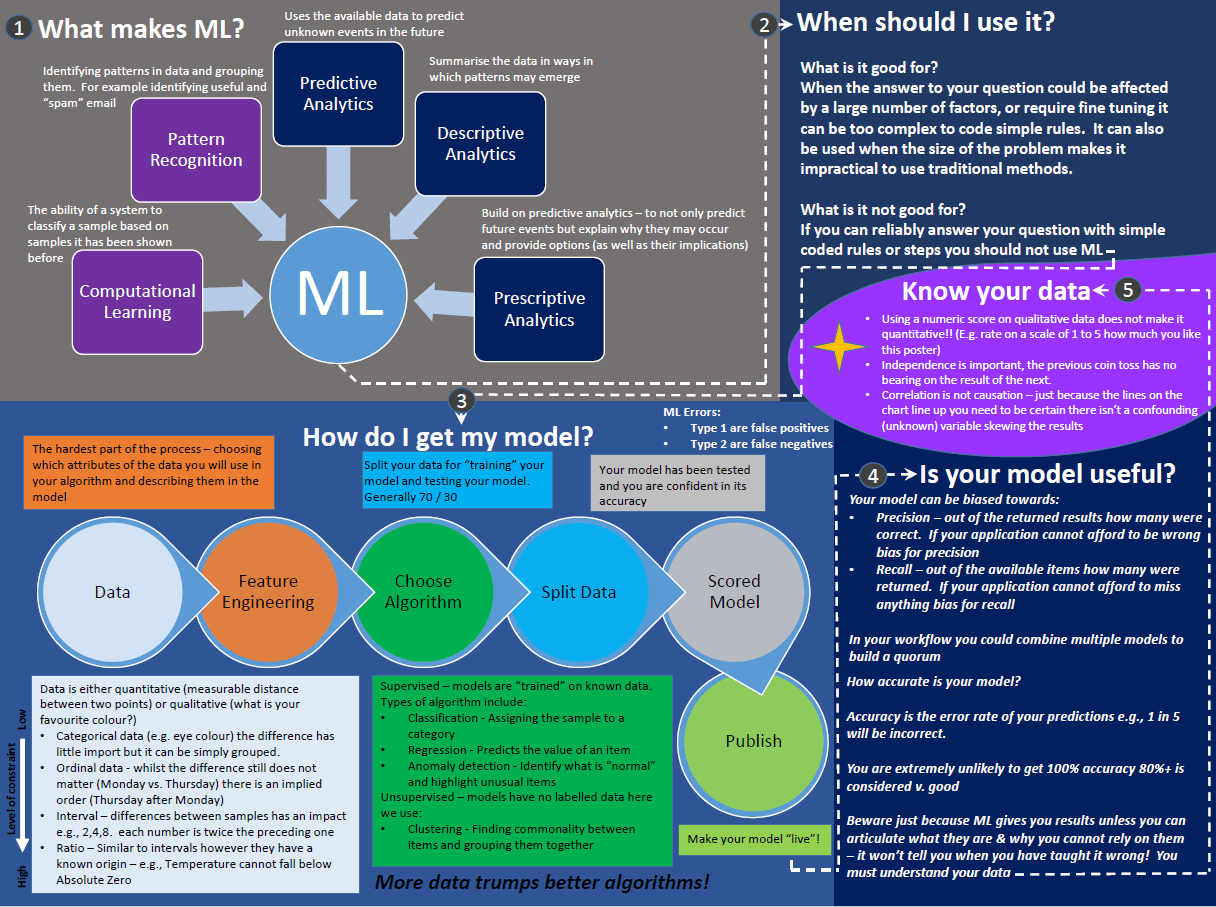
Or, you can find inspiration for your next Instagram caption, dive into our guide to social media engagement more generally, and brush up on how to write an effective social media call to action.
Embrace the power of hashtagsThe Instagram algorithm can’t understand and admire that cute picture of a cat in wire-rimmed glasses the way the human brain can (tragic), but it can understand the #catsofinstagram hashtag.
View this post on Instagram
A post shared by Benson (@a_street_cat_named_benson)
Employing accurate and descriptive hashtags is a great way to label your content for maximum reach. If the algorithm can compute just what your photo or post is about, it can more easily share it with people who are interested in that particular topic.
Bonus: Download a free checklist that reveals the exact steps a fitness influencer used to grow from 0 to 600,000+ followers on Instagram with no budget and no expensive gear.
Get the free guide right now!
Plus, unlike Instagram ads (the other way to expand reach past your existing audience), hashtags are free.
To use hashtags correctly, don’t just slap #loveandlight and #instagood on everything. Instead, dig around in your niche, do your research, and use hashtags that actually describe what your post is about.
Hone your hashtag skills with our ultimate guide to Instagram hashtags.
Post consistentlyThis is key whether you’re looking for help with reach, engagement or follower growth. (Because, of course, those three things are related.)
On average, businesses post 1.6 posts to their feed per day. If that sounds like way too much for your mom-and-pop operation, rest assured that just showing up consistently (every weekday, for instance), is enough to keep the ball rolling.
During Instagram’s Creator Week in June 2021, Instagram chief Adam Mosseri revealed that a posting cadence of 2 feed posts per week and 2 Stories per day is ideal for building a following on the app.
View this post on Instagram
A post shared by Instagram’s @Creators (@creators)
Pro Tip: Consistency requires planning. This is where having a social media content calendar becomes crucial, as well *ahem* as scheduling your posts in advance with Hootsuite.
Look at how nicely planned out your Instagram posts could look in Hootsuite’s planner — for weeks or months in advance!
Start your free trial. You can cancel anytime.
Track (and understand) your analyticsA good Instagram analytics tool will go beyond vanity metrics and help you zero in on your audience and identify the kind of content that they’ll keep coming back for.
No matter how busy you are, getting automatic analytics reports will help you with almost all of the above tips.
Taking the time once a month, for instance, to look at the numbers and see what’s working in terms of content, posting time, and hashtags, will save you a lot of wasted effort.
Use an Instagram analytics tool to find out:
- when your audience is online (so you can schedule your posts during that window)
- which hashtags are performing well
- what posts are earning real engagement
Meanwhile, a truly great tool (like Hootsuite) will give your brand the low-down on everything from audience sentiment analysis to campaign click-throughs to customer service response times.
Here’s a peek at Hootsuite Analytics, which shows you the most Instagram important metrics to track alongside performance stats from your other social networks for easy comparison.
Start your free trial. You can cancel anytime.
Bonus: Notice any big dips or spikes in your stats recently? Analytics is often the first place a social media manager can tell if something has changed in the Instagram algorithm — and start adjusting their strategy accordingly.
Of course, social media platforms are always evolving, so there are certainly more Instagram algorithm changes to come as the years go on. But whatever specific signals, features, or top-secret-AI-recipes the future may hold for the app, creating engaging Instagram content is always a winning strategy.
Instagram algorithm FAQ
What is the Instagram algorithm?
The Instagram algorithm is a set of rules that rank content on the platform. It decides what content shows up, and in what order, all across the app (users’ feeds, the Explore Page, the Reels feed, hashtag pages, etc.).
How do I fix my Instagram algorithm?
- Create relevant content (keep up with trends)
- Post when your audience is online
- Use the right hashtags
- Post carousels to your feed
- Frequently post Reels
- Try out new content formats and features as soon as they come out
- Write long captions
What are the 3 main factors of the Instagram algorithm?
The Instagram algorithm has three main ranking factors: relationship, interest, relevancy.
How do you get picked up by the algorithm on Instagram?
- Respect community guidelines
- Get creative with Reels
- Schedule your posts at the right time for maximum reach
- Respond to comments and DMs
- Use the right hashtags
- Post consistently
- Check analytics
Beat the Instagram algorithm and save time managing your social media using Hootsuite. From a single dashboard, you can schedule and publish content, engage your audience, and measure performance. Try it free today.
Get Started
Easily create, analyze, and schedule Instagram posts, Stories, and Reels with Hootsuite. Save time and get results.
Free 30-Day Trial
How to Survive and Outsmart the Instagram Algorithm
Is your brand set to stay ahead of Instagram algorithm changes?
Ever since the platform moved away from reverse-chronological and to a curated content feed, it’s not always an easy question to answer.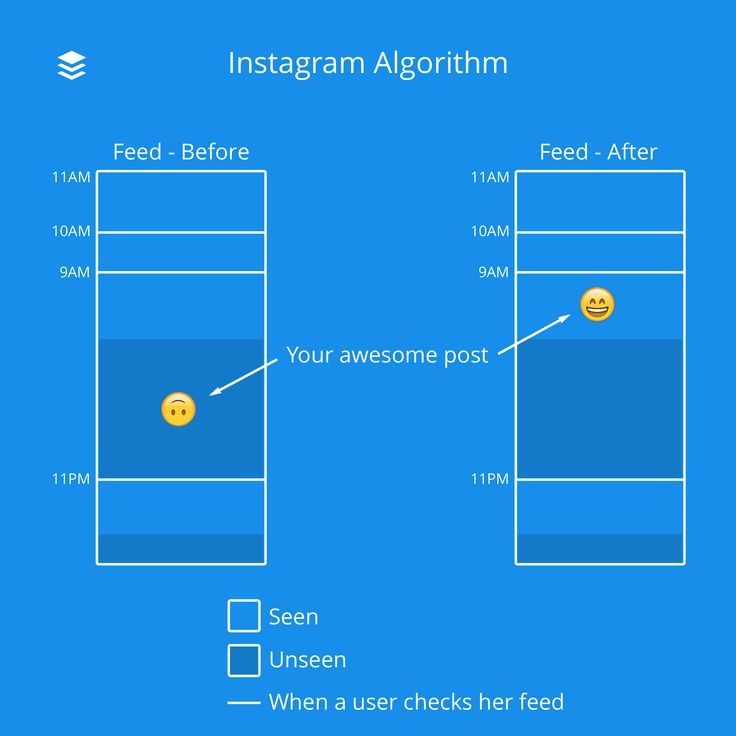
Past social algorithm updates have rocked brands’ organic reach and can leave marketers scrambling to both understand the changes and rethink their strategic approach.
In this guide, we’ll break down the state of the Instagram algorithm as we know it. We’ll likewise dive into some specific strategies and tactics to ensure that you’re maximizing your organic reach as the algorithm continues to evolve.
Rise above algorithm changes with Sprout SocialAlgorithms may change, but your performance doesn’t have to.
Sprout’s patented ViralPost® technology analyzes your audience data and detects the most active times for authentic engagement, enabling you to automatically schedule content at the best times for your brand to maximize results.
Alyssa Townsend
Director of Social Media
Start Your Free Trial
How does the Instagram algorithm work?
To better understand the present day Instagram algorithm, let’s turn back the clock.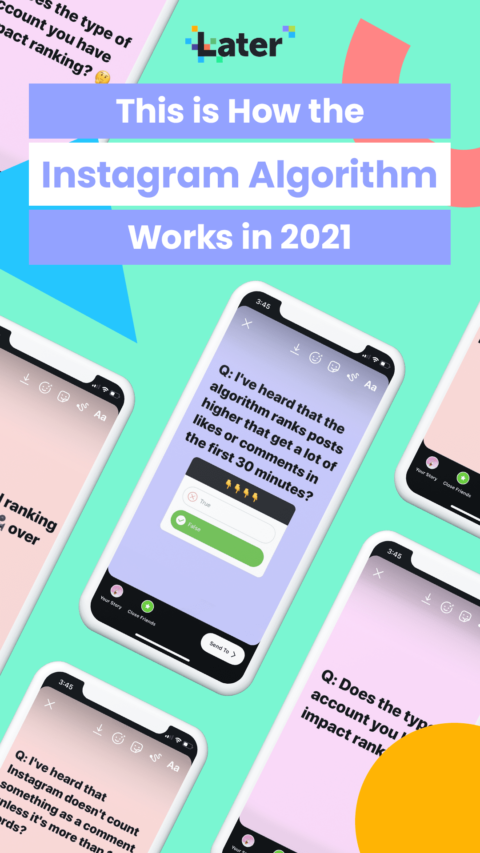
In 2016, Instagram announced that users’ feeds would prioritize “the moments you care about,” ending the reverse-chronological feed in favor of a curated one similar to parent company Facebook. Similar to Facebook’s changes that would prioritize friends and family, the Instagram algorithm prioritizes timely, fresh posts that relate to users’ areas of interest.
The network has described the Instagram algorithm ranking signals as:
- Interest: Your likely interest in content based on engagement with similar topics.
- Timeliness: More recent posts are prioritized over older ones.
- Relationship: Content from accounts you’ve interacted with more is prioritized.
- Frequency: How often you use Instagram factors into what the top posts in your feed will be.
- Following: How many people you follow affects what you see–you may see less content from any one account if you follow a lot of accounts.
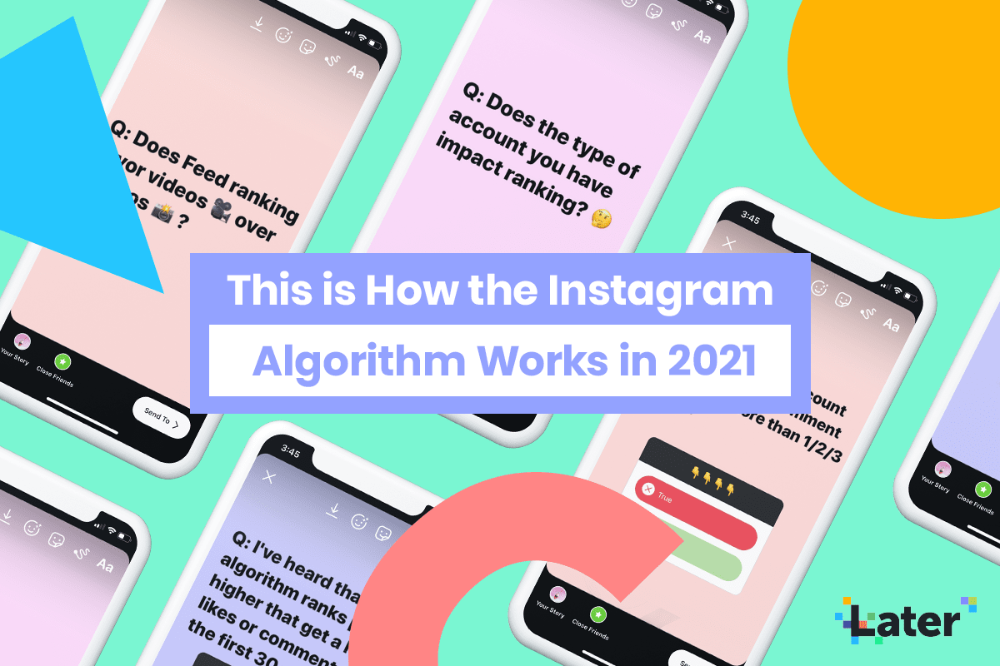
- Usage: Spending more time on the app scrolling through your Instagram feed means you’ll see more or even everything the algo has to offer you at the moment.
Instagram further explained each of its content types’ ranking factors in a 2021 post designed to increase transparency about the “algorithms, classifiers and processes” that shape what users see first on the app. For feed posts, the key factors mentioned here line up fairly well with what was previously reported:
- Information about the post: Ranging from engagement to more general data like location.
- Information about the person who posted: Such as your previous interactions or other signals their content is interesting to you.
- Your activity: Includes how many posts you’ve liked and how you interact with content in general.
- Your history of interacting with someone: Actions like commenting can show your interest level in continuing to interact with another account.

Just like any curated social feed, Instagram has continued to update and refine how their algorithm works over time.
So where do these technical insights leave marketers?Come up with a content strategy that gives the Instagram algorithm exactly what it wants. One way to do this is to create consistently high quality content that can stand up to future algorithm changes.
When you notice your Instagram engagement is down, it may not always be attributable to the algorithm alone. However, these tips will help you future-proof and be ready for any new algorithm updates with outstanding content and a deeper understanding of how the platform works.
Learn about other network algorithms
Working on your strategy across platforms? Read these guides to learn more about optimizing for each network:
- Everything you need to know about social media algorithms
- How the Facebook algorithm works
- What to know about how the Twitter algorithm works
- How to make sense of the LinkedIn algorithm
9 strategies and tactics to outsmart the Instagram algorithm
Based on what we know about how the algorithm works and what we’ve seen firsthand, growing your reach and engagement is certainly possible in a curated feed.
Here’s a snapshot of the strategies and tactics you should employ if you want to guarantee that more people see your content.
1. Step up your photo quality
According to Instagram themselves, ranking higher in your followers’ feeds goes hand in hand with creating “great content.”
No-brainer, right? Except what constitutes “good content” is in the eye of the beholder and doesn’t give us many specifics.
Regardless, there’s no denying that the most-liked and shared content on Instagram is oftentimes visually striking.
Bold colors. Breathtaking landscapes. The sort of stuff that gets people to stop in their tracks and smash “Like.”
View this post on Instagram
A post shared by Airbnb (@airbnb)
If you’re already creating eye-popping content, you’re ahead of the curve.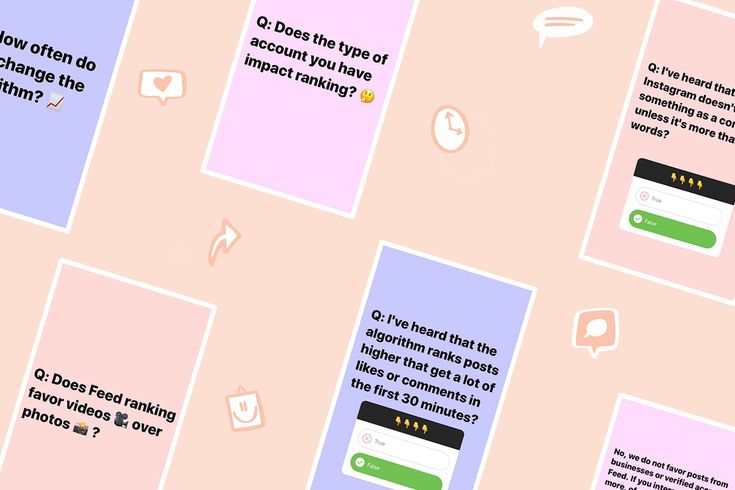
And if not, you may want to think about producing some professional visuals from time to time. Even if you’re in a seemingly “boring” industry, high-quality photos are an expectation rather than an exception to the rule.
Also, consider that there are tons of Instagram apps out there like VSCO which can give your imagery a more professional vibe on a budget.
View this post on Instagram
A post shared by VSCO (@vsco)
2. Keep publishing consistent Stories
Supposedly, Stories do not have any sort of influence on the Instagram algorithm.
So why are we mentioning them?
For starters, they’re a hugely popular content type that’s highly effective for marketing with 500+ million daily users and one third of the most-viewed stories coming from brands.
Plus, Stories are placed at the top of user’s feeds regardless of other ways the algorithm might be prioritizing your content, so you can consistently be top-of-mind and within reach of your audience.
This doesn’t mean you want to post Stories over traditional feed posts, though. Rather than choose between Stories and regular posts, your mentality should be “Why not both?”
Stories provide an authentic, speedy way to engage your audience that people obviously love. They also push your brand’s account to quite literally the front and center of your followers’ feeds.
In short, Stories will consistently keep your profile popping up. This spells good news for engagement as you post Stories that encourage followers to check out your content.
3. Publish more video content
Instagram doesn’t downright say that video is prioritized over photos.
The might lead us to believe that they’re treated the same, but let’s dig a bit deeper as to why video definitely deserves your attention.
Remember what we said earlier about eye-popping content? Given that video autoplays in your followers’ feeds, there’s arguably no better way to grab someone’s attention when they’re sitting there scrolling.
And if we’re following the logic behind Facebook’s algorithm, we want followers to spend as long as possible engaging with our profiles. Short-form and long-form videos require people to stop and look, plain and simple.
Instagram’s platform continues to add newer video features like Reels and IGTV. These content types can also appear in both the traditional feed and in their own tabs on account pages, meaning Instagram is seriously emphasizing the ability of audiences to find video content.
As a side note, your video content doesn’t need to be a full-blown production. Simple time lapse, behind-the-scenes videos, or short Reels are enough to draw in viewers for brands both big and small. What matters is that you’re producing some form of video.
4. Go live more often
Similar to Stories, Live video doesn’t have any specific bearing on the Instagram algorithm.
However, Instagram Live does generate notifications to followers by putting itself atop your followers’ Stories feeds as well.
The beauty of live video is that audiences are more interested in the spontaneous element than the production values, and expect something more simple and off-the-cuff. This means there’s less pressure once again for professional, polished content.
Just like brands should experiment with traditional video, live video is also something to explore. Throughout 2020, live video exploded as a way to keep in touch through brand Q&A’s, digital events and announcements. Be sure you’re testing out live video and increasing your comfort level with the format rather than waiting for a perfectly produced moment.
5. Craft more compelling captions
The Instagram algorithm supposedly prioritizes engagement.
That means likes and shares are valuable currency.
But encouraging interactions directly is totally fair game on Instagram. Doing so is also so easy as you can ask followers directly to drop a comment.
Doing so is also so easy as you can ask followers directly to drop a comment.
For example, tag-a-friend or question-based captions are a great way to get people talking. Conversations encourage interactions which is a positive signal to Instagram.
View this post on Instagram
A post shared by Birchbox US (@birchbox)
Conventional wisdom should tell us that not each and every post should follow this formula, though. This is based on how Facebook punished engagement bait and brands that purposely tried to game their algorithm. In other words, you should integrate meaningfully engagement-based captions on Instagram but don’t go overboard with unnaturally fitting the tactic into every post.
6. Run a contest or giveaway
For many businesses, you’ll notice that contest and giveaway posts are among their most popular and engaged-with.
Whether it’s sharing a hashtag or creating some user-generated content, contests can help drive a surge of engagement to your profile.
Despite popular belief, these contests are alive and well. Just make sure you’re equipped to handle a social media contest and understand the legalese behind it before getting started. Also, consider a “less is more” strategy for your contests so that there’s ample time to build buzz between them.
7. Harness the power of your hashtags
The more eyes on your posts, the better.
Hashtags can help attract those eyes in a matter of seconds.
Including hashtags as part of your content strategy ensures that your posts are essentially searchable. A combination of branded, product and community hashtags represents the perfect storm of encouraging engagement.
View this post on Instagram
A post shared by HelloFresh US (@hellofresh)
If you’re afraid of going hashtag-heavy, don’t be. Based on our breakdown of how to use hashtags, using even up to the maximum 30 hashtags can be effective for getting the reach you want. However, make sure they’re highly relevant and don’t just look like spam.
To use the most effective top-performing tags instead of needlessly bloating your captions, use Sprout to zero in on which tags can best maximize your reach.
8. Post during peak hours
Perhaps the most straightforward way to win with the Instagram algorithm is to post during peak hours.
Here’s a glimpse of the best times to post based on our latest research.
Publishing during peak times doesn’t necessarily guarantee a flood of activity due to the non-chronological feed. However, posting content that syncs up with when people are actually on the app will help you hit some of the timeliness and usage frequency ranking factors mentioned above.
Everyone’s audience is different and therefore will be most engaged at different times. That’s why features such as Sprout’s ViralPost are valuable, automatically detecting when your followers are more likely to see your content. You can then schedule your posts in advance to hit on those times.
9. When in doubt, post more often!
Finally, don’t be afraid to increase your posting frequency.
As highlighted by Recode, Instagram explicitly said in 2018 that posting “often” is within their best practices. In their own words:
“We don’t down-rank people for posting [frequently]. We do make sure your feed feels diverse so we may break up posts.”
And in a way, this brings our guide to outsmarting the Instagram algorithm full-circle.
Posting more often will give you more room to experiment and assess which pieces of content (hint: like the types above) are working and which aren’t.
Through Sprout’s scheduling, you can plan out a diverse content calendar that helps you reach more customers by allowing you to queue up posts in advance. This allows you to the freedom to publish more often on your own schedule rather than feel pressured to publish in real-time.
Analytics and reporting from Sprout can point you to top-performing posts, peak times and what pieces of your Instagram campaigns are resulting in the most followers.
And with that, we wrap up our list!
Are you ready to take on the new Instagram algorithm?
Spoiler alert: the Instagram algorithm doesn’t have to be a giant question mark.
There’s still plenty of ways for brands to engage customers in the face of the evolving Instagram algorithm without having to invest exclusively in ads.
Doing so means taking advantage of the platform’s latest features as well as scheduling tools like Sprout to ensure you’re constantly putting out fresh, timely content that encourages engagement. Rather than shy away from the new rules of the algorithm, tackle them head-on.
If you do find yourself struggling to reset your content strategy after an algo change, check out our resource on what to do next when your content strategy stalls out.
How the Instagram algorithm works and how to get maximum reach
Instagram explained how the news feed generation algorithms work. Previously, the platform had never published such data, and there were many rumors about the social network among marketers. The site also answered the most common of them.
Read more: Understanding Instagram's algorithmic feed will help you get the most out of your posts and engagement.
Timeline was not more convenient
This is not said by the representatives of the social network (and certainly not by users), but by the numbers: users missed 70% of all posts, and 50% of friends' posts, when the results were formed in the order of publication of posts.
Users now see up to 90% of their friends' posts, according to Instagram. Recall that in recent months, Facebook has been paying attention to maintaining contacts between friends and family within the social network.
Top Factors for Instagram Ranking Algorithm
Instagram uses machine learning to analyze your social media behavior to create a personalized feed for each user. Even if two people follow the same list of accounts, their newsfeeds will differ depending on interactions with those accounts. Next, let's take a closer look at what affects the work of the feed on Instagram.
Interest
Instagram predicts whether a post will interest you based on your previous activity with similar content. The similarity of publications is also determined by machine vision.
Relevance
Priority is given to publications made recently.
Relationships
Instagram determines how close you are to the author of a post. Comments under his photos and marks on joint photos are taken into account.
Three additional ranking factors
Instagram representatives also identified three additional factors affecting the display of posts in the feed.
Frequency
How often you visit Instagram: the algorithm tries to show you the best posts since your last visit.
Number of subscriptions
If you follow a large number of accounts, the algorithm has a wide selection of posts to add to your feed - so you see the posts of a particular person less often.
Behavior
How much time do you spend in the app, and how do you view the content: quickly scroll through the feed or go to your account and see the posts there.
Myths about how Instagram algorithms work
The Instagram team has debunked well-known user misconceptions about how Instagram works, especially how the feed is displayed.
1. Instagram has no plans to bring back the timeline. This will complicate the use of the service. However, the company listens to user dissatisfaction with the current algorithm. Gradually, changes will be made to its work.
2. Posts in the feed are not hidden, but only ranked. If you scroll for a very long time, you will see posts from absolutely all the accounts you follow.
3. The Instagram algorithm doesn't prioritize posts with videos as well as posts with photos. It analyzes what content the user watches more often, and it is in his personalized feed that posts with this type of content are more likely to get.
4. Instagram does not rank above users who post Stories, Live, or use any other features of the app. It's a myth that using Stories affects reach.
5. Users who post content too often are not demoted in the feed. But if posts are published one after another with a small time interval, Instagram will in most cases add posts from other users between them.
6. Account type does not affect reach in any way : Switching from a business account to a personal account and vice versa will not give any results.
7. Shadow ban (hiding posts in search results by hashtags) does not exist v.
How to improve the performance of your Instagram account knowing the feed ranking factors?
1. Publish regularly
You need to catch the eye of your followers to stay in their feeds. Some marketers and bloggers advise making at least one post per day. For some, this is too much - sometimes creating content takes time and effort. Three posts per week will be enough.
2. Communicate with the audience
Yes, those same questions “How will you spend your summer?” actually work on Instagram too. Ask your audience open-ended questions, and if you run a brand account, try to engage subscribers in a conversation - not only about your product, but also on abstract topics.
3. Interact with similar content
Browse accounts similar to yours, reply to friends in direct on Stories, participate in discussions relevant to your profile topic.
4. Study the audience
Determine what your subscriber likes: photo or video, long or short text, useful information or beautiful pictures.
To do this, ask them directly - for example, through a survey in Stories, or analyze the account's old posts. You can quickly do this in Popsters.ru: it will show the most popular and discussed posts of all time, determine the days of the week and hours when subscribers are most active, show on the charts the optimal text length for your audience - and many more metrics that will help you improve content in the account.
Terminals
- Three main factors of new algorithms for ranking the news feed in Instagram: interest, relevance, relationship with the author of the publication.
- Three additional factors: posting frequency, number of subscriptions, user behavior.
- Ranking algorithms do not hide posts, but only arrange them, if you scroll through the feed for a long time, you can find any publication from subscriptions.
- Instagram algorithms do not consider account type and content type.
- To increase the effectiveness of posting, you need to publish content regularly, communicate with subscribers and participate in discussions in other people's comments yourself.
- To find out what your audience likes, ask them through polls, or analyze past experiences with Popsters. Advanced analytics on Instagram will help in the rapid development of your account.
Useful articles on a similar topic:
- Finding the best time to post on Instagram;
- How users perceive content in Instagram Stories and feed;
- 15 facts and figures about Instagram that a marketer should know;
- How to write an effective description on Instagram.
Instagram told how algorithms actually work - Social networks on vc.ru
This day has come! On June 8, Instagram officially spoke on its blog about how Instagram algorithms actually work. This publication will be of interest not only to marketers, SMM specialists, bloggers, but also to everyone who uses Instagram. I share a full translation of the official article of the head of Instagram Adam Mosseri.
72 079 views
What is the Instagram "algorithm"?
Instagram doesn't have a single algorithm that keeps track of what people do and what they see or don't see in the feed. Instagram uses many algorithms, classifiers and processes, each with its own purpose.
We want to make the most of your time and believe that these technologies help the social network to personalize the user experience and make the time spent more efficiently.
Adam Mosseri, Head of Instagram
When we first launched Instagram in 2010, it was a single stream of photos in chronological order.
But as more people joined and shared content, it became more difficult for them to see everything that appeared on the social network. By 2016, people were missing 70% of content, including almost half of messages from friends. Therefore, Instagram has developed a “smart feed”, in which posts are ranked depending on what excites and interests the user.
Adam Mosseri, Head of Instagram
Each part of the social network - Feed (tape), Stories, Explore (Interesting), Reels uses its own algorithm, adapted to the experience of a particular user.
How does the feed and stories algorithm work?
The feed and Stories ranking algorithm can be broken down into .
- In the first step, Instagram chooses what to show the user first - these will be all the recent posts shared by the people they follow. There are, however, a few exceptions (such as ads), but the vast majority of what he sees is content from subscriptions.
- Instagram then collects all information about the user's preferences and what was posted by whom. The social network calls these “signals”, and there are thousands of such signals: when the post was published, whether the person uses the phone or is on the site, how often they watch the video, and so on.
Here are the signals in the feed and Stories that move posts higher in the search results in order of importance to the user:
- Post data. This is both an indicator of the popularity of a publication (how many likes it was given) and a technical one: when the post was made, how long the video lasts in Stories, what geotag was set.
- Notice, Instagram first said that geolocation is also taken into account when ranking posts!
- Information about the author of the content. Instagram looks at how many user interactions there have been with posts and Stories of an author over the past few weeks.
This data allows the social network to understand how the account and its publications can be of interest to a person.
- User activity. The social network studies the number of likes, comments on other posts in order to assess the activity of a person and better understand his interests.
- History of user interactions with the content author. The social network looks at how often and to whom the user writes comments and likes posts and Stories.
From these signals, Instagram creates a set of predictions - these are the probabilities of user interactions with content. There are many such predictions. There are five of them in the tape:
- watch time,
- commenting,
- like,
- save,
- go to profile.
The higher the likelihood that a person will perform these actions, the higher the content ranking. Over time, signals and forecasts change - this is how the social network tries to better understand the interests of the audience.
There are a few restrictions. First example - Instagram tries not to show too many posts from the same person. The second example is reposting posts in Stories from the feed. Previously, the social network believed that the audience was only interested in viewing original content, and therefore the ranking priority for reposts was low.
The World Cup and other public events have shown that the authors want to be heard. Therefore, Instagram “does not want to interfere” with the distribution of important content.
Instagram wants to let people express themselves, but when users post content that could compromise another person's safety, Instagram intervenes. After all, there are “Community Guidelines” that apply not only to the feed and Stories, but to all of Instagram. Most of these rules are aimed at ensuring the safety of users. If you post something that goes against the Community Guidelines and Instagram sees it, of course, the relevant content is removed. A systematic violation may eventually lead to the blocking of your account. If the user believes that Instagram has made a mistake, an appeal must be filed.
How does the Instagram algorithm in recommendations work?
The Explore tab has been designed to help users find something new. The grid consists of recommended photos and videos that Instagram itself finds for people, which is very different from the feed and Stories. Earlier, representatives of the social network have already talked about the operation of the algorithm, but now there is more information.
The first step the algorithm takes is to determine the set of posts to rank. To find photos and videos that might be of interest to a person, he looks at the signals: what posts he liked, saved or commented on in the past.
For example. If you are subscribed to dumplings, then the algorithm looks at who else is subscribed to the profile with dumplings and what those who read this dumpling profile are interested in. From here, a kind of cloud of topics related to dumplings is created that may potentially interest you and will be shown to you in the recommendations section.
Once it finds a group of photos and videos that you might be interested in, the algorithm sorts them by how interested the soulless algorithm thinks you are in each one, much like Feed and Stories are ranked.
The best way to guess how interested you are in something is to predict how likely you are to react to the content in some way. The most important actions predicted in Explore include likes, saves, and shares.
Adam Mosseri, Head of Instagram
- Post information. Here the algorithm looks at how popular the post seems to be. These are signals, such as how much and how quickly other people like, comment, share, and save a post. These cues matter much more in Explore than they do in Feed or Stories.
- Your history of interaction with the author.
The post is most likely shared by someone you've never heard of, but if you've interacted with them, it gives the algorithm an idea of how interested you might be in that content.
- Your activity. These are signals such as which posts you have liked, saved or commented on, and how you have interacted with posts in the recommended past.
- Information about the author. These are signals like how many times people have interacted with this person over the past few weeks to help find interesting content from a wide range of people.
In addition, Instagram tries not to show questionable content in Interesting. For example, scenes of tobacco smoking or vaping. Yes, such content can be shared in the feed and Stories, but the chance of it getting featured is low.
Shadowbanning Pro
"People often accuse us of 'shadowbanning them' or silencing them.
It's a broad term they use to describe the many different experiences they have on Instagram. We acknowledge that we have not always done enough to explain why we hide/remove content when we do, what is recommended and what is not. As a result, we understand that people will inevitably come to their own conclusions about why something happened, and that those conclusions can be confusing for people.”
Adam Mosseri, Head of Instagram
Instagram cannot promise you that you will consistently reach the same number of people when you post and Stories. The truth is that most of your followers won't see what you share because most of them watch less than half of their feed.
Adam Mosseri, Head of Instagram
But the head of the social network notes that the social network is trying to be more transparent and is developing an improved notification system in the application so that people know why their message was deleted, and is exploring ways to tell people when what they post is contrary to the recommendations.
My opinion on the shadow ban
Shadowban is a strange item. It seems to be there, but it seems to be not. This is the only way I can explain the existence of this term. No one can prove its existence and action, but many believe and fear.
You have probably seen how many social network users ask questions in Stories: “Did you see my post in the feed?”, “Little likes on the last post, it seems no one sees it?”. One gets the impression that everyone brings their own meaning to this concept, thereby causing confusion. In my opinion, Instagram explains everything logically: if you break the rules, copy other people's texts, make posts on prohibited topics, use cheat services, you get less in the feed, your coverage drops, and there can be no talk of impressions in the recommendation. Everything is logical and understandable!
Many people like to subscribe to hundreds and even thousands of accounts, so it's simply impossible to see the entire feed.
Due to such subscriptions, those accounts to which the user is subscribed suffer. Conclusion - subscribe only to those pages that you will actually read every day, and everyone will be fine!
I have never encountered a shadowban and neither have my clients. However, if you break something, it will affect your account, reach, and so on, whatever one may say.
The shadowban is just a myth created by the users themselves to force the audience to like and comment. But why does no one think that the problem may be in your content, which is not relevant or interesting?
Julia Toloknova, Content Marketer, SMM Specialist SMM360.RU
How can you influence what you see on social media?
- Choose your close friends. You can choose your close friends for Stories. This feature was designed to ensure you can only share with the people closest to you, but Instagram will also prioritize those friends in both the feed and Stories.
- Turn off people you are not interested in. You can restrict other people's accounts if you want to stop seeing their content, but don't dare to unfollow them.
- Mark suggested posts as Not Interested. Every time you see a featured post, you can indicate that you don't like it. The social network will do its best not to show you similar recommendations in the future.
Providing more context on how content is rated, displayed and moderated on Instagram is only part of the equation. We can do more to help you shape your Instagram experience around what you like. We also need to keep improving our ranking technology and of course make fewer mistakes. Our plan is to actively explain our work on all three fronts from now on. Keep for updates.
Adam Mosseri, Head of Instagram
Recommendations
- Create unique, high-quality and useful content.



